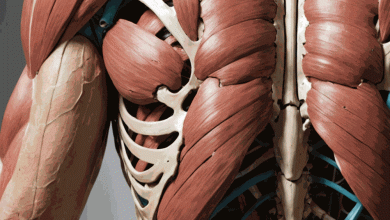Preventing Workout Injuries: Recognizing Common Exercise Injuries & Tips

Staying fit and active is crucial for maintaining good health, but workout injuries can derail even the most dedicated fitness enthusiasts. This article delves into the common types of exercise injuries, how to recognize and prevent them, and the best practices for recovery and rehabilitation. Whether you’re a seasoned athlete or a beginner, this guide provides valuable insights to help you stay injury-free and make the most of your fitness journey.
Understanding Workout Injuries
What are the Most Common Types of Workout Injuries?
Workout injuries are common occurrences in the fitness world, affecting both novices and seasoned athletes alike. The most prevalent types of injuries include sprains, strains, tendonitis, and stress fractures. Sprains often occur when ligaments are stretched beyond their capacity, while strains involve muscles or tendons being overstretched or torn. Tendonitis is an inflammation of the tendons, frequently caused by repetitive movements. Stress fractures, small cracks in bones, are typical in high-impact activities. Understanding these injuries is the first step in preventing them and ensuring a safe exercise routine.
What Causes Workout Injuries?
Several factors contribute to workout injuries, ranging from improper technique to overtraining. Poor form during exercises can place undue stress on muscles and joints, increasing the risk of injury. Additionally, not allowing sufficient recovery time between workouts can lead to overuse injuries, as muscles and connective tissues do not have the chance to repair. Inadequate warm-up and stretching are also significant causes, as they prevent muscles from reaching their optimal performance state. Recognizing these causes can help in implementing preventive measures to avoid injury.
Recognizing the Signs of Exercise Injuries
How Can You Identify an Injury Early On?
Early identification of an injury is crucial for effective treatment and swift recovery. Subtle signs such as persistent pain, swelling, and reduced range of motion can indicate an injury. Unlike regular muscle soreness, which typically resolves within a few days, injury-related discomfort persists and can worsen with activity. Paying attention to these early signs allows for timely intervention, reducing the risk of further damage and facilitating quicker healing.
What Symptoms Should You Look Out For?
To differentiate between a minor ache and a serious injury, it’s important to monitor specific symptoms. Intense pain that doesn’t subside with rest, visible swelling, bruising, or an inability to bear weight are red flags. Additionally, any numbness, tingling, or weakness in the affected area should be taken seriously. Recognizing these symptoms early can prevent minor issues from escalating into severe injuries, ensuring that you maintain your fitness routine without interruption.
When Should You Seek Medical Attention?
While some minor injuries can be managed with home care, there are instances where professional medical attention is necessary. If the pain is severe, persists despite rest, or is accompanied by significant swelling or deformity, consulting a healthcare provider is advisable. Immediate attention is crucial if there’s a loss of function or if the injury is impacting daily activities. Seeking timely medical advice can lead to a more accurate diagnosis and effective treatment plan, preventing long-term complications.
How Can You Differentiate Between Muscle Soreness and an Injury?
Understanding the difference between muscle soreness and injury is vital for appropriate response and care. Delayed onset muscle soreness (DOMS) is a common experience following intense workouts, characterized by stiffness and mild discomfort that peaks within 48 hours. In contrast, an injury often presents as sharp, localized pain that worsens with activity. Unlike DOMS, injuries may also show signs of swelling and bruising. Recognizing these distinctions ensures that you can tailor your recovery strategy appropriately, avoiding unnecessary downtime.
Tips for Preventing Workout Injuries
How Important is a Proper Warm-Up?
A proper warm-up is essential in preparing your body for physical activity, reducing the risk of injury. Engaging in dynamic stretching and light cardio exercises increases blood flow to muscles, enhancing flexibility and joint range of motion. This preparation helps prevent strains and sprains by ensuring that muscles are ready to handle the demands of your workout. Consistently incorporating a warm-up routine can significantly lower the incidence of exercise-related injuries.
What Role Does Stretching Play in Injury Prevention?
Stretching plays a pivotal role in maintaining flexibility and preventing injuries. Incorporating both dynamic and static stretching into your routine can help elongate muscles and improve joint mobility. This not only aids in reducing muscle tension but also enhances performance by allowing for more efficient movement patterns. Stretching should be an integral part of your workout regimen, both before and after exercises, to minimize the risk of strains and overuse injuries.
How Can You Properly Use Equipment to Avoid Injuries?
Proper use of equipment is crucial in preventing workout injuries. Familiarize yourself with the correct techniques and settings for each machine or tool you plan to use. Ensuring that equipment is in good condition and suitable for your fitness level can prevent accidents and reduce strain on muscles and joints. Additionally, consider seeking guidance from a fitness professional if you’re unsure about proper usage, as this can help mitigate the risk of injury and enhance the effectiveness of your workout.
How to Modify Your Workout to Avoid Injuries
What Adjustments Can You Make to Your Routine?
Making adjustments to your workout routine is a proactive way to prevent injuries. Gradually increasing the intensity, duration, and frequency of your workouts allows your body to adapt and strengthen without undue stress. Incorporating a variety of exercises can also help prevent overuse injuries by ensuring a balanced development of muscles. Listening to your body and making necessary modifications based on fatigue or discomfort can go a long way in maintaining a safe and effective fitness regimen.
How Can Cross-Training Help in Preventing Injuries?
Cross-training is an effective strategy to reduce the risk of injuries by diversifying your exercise routine. By engaging in different types of physical activities, you can target various muscle groups, promoting overall strength and flexibility. This approach not only minimizes the repetitive stress on specific muscles but also enhances cardiovascular fitness and endurance. Incorporating activities such as swimming, cycling, or yoga can complement your primary workouts, providing a balanced and injury-resistant fitness plan.
What are the Benefits of Listening to Your Body?
Listening to your body is a crucial component in preventing workout injuries. Being attuned to the signals your body sends, such as pain or fatigue, allows you to make informed decisions about your exercise intensity and duration. Ignoring these cues can lead to overtraining and increase the risk of injury. By respecting your body’s limits and allowing adequate recovery time, you can enhance your fitness progress while minimizing the potential for setbacks.
Recovery and Rehabilitation After an Injury
What Steps Should You Follow for a Safe Recovery?
Recovering from a workout injury requires a strategic approach to ensure complete healing and prevent recurrence. Initially, rest and ice can help reduce inflammation and alleviate pain. Gradually reintroducing movement through gentle exercises can aid in maintaining mobility and preventing stiffness. It’s important to follow a structured rehabilitation program, often guided by a healthcare professional, to rebuild strength and function safely.
How Can Physiotherapy Aid in Recovery?
Physiotherapy plays a significant role in the recovery process, offering tailored interventions to address specific injuries. A physiotherapist can design a personalized rehabilitation plan that includes exercises to restore strength, flexibility, and range of motion. Additionally, they can provide manual therapy techniques and modalities such as ultrasound or electrical stimulation to expedite healing. Engaging in physiotherapy ensures a comprehensive recovery, reducing the likelihood of future injuries.
When is it Safe to Return to Your Workout Routine?
Determining when to resume your workout routine after an injury is crucial for a safe return to fitness. It’s important to ensure that pain and swelling have subsided and that you have regained full range of motion and strength in the affected area. Consulting with a healthcare provider or physiotherapist can provide valuable guidance on the appropriate timing and intensity for reintroducing exercises. Gradually increasing activity levels and monitoring for any signs of discomfort can help prevent re-injury and promote long-term recovery.
Conclusion
What Are the Key Takeaways for Preventing Workout Injuries?
Preventing workout injuries involves a multifaceted approach that includes understanding common injuries, recognizing early signs, and implementing preventive measures. Key takeaways include the importance of proper warm-up and stretching, the benefits of cross-training, and the necessity of listening to your body. By adopting these practices, you can minimize the risk of injury and optimize your fitness journey.
How Can You Stay Informed About Safe Exercise Practices?
Staying informed about safe exercise practices is essential for ongoing injury prevention. Regularly updating your knowledge through reputable sources such as fitness experts, health professionals, and scientific literature can provide valuable insights. Attending workshops, webinars, or fitness classes led by certified trainers can also enhance your understanding of effective and safe exercise techniques. Being proactive in your education ensures that you remain equipped to maintain a healthy and injury-free lifestyle.
- Common workout injuries include sprains, strains, tendonitis, and stress fractures.
- Injury prevention involves proper warm-up, stretching, and correct use of equipment.
- Recognize early signs of injury, such as persistent pain and swelling, for timely intervention.
- Cross-training and listening to your body can reduce injury risk and enhance fitness.
- Recovery should involve a structured rehabilitation plan, potentially with physiotherapy support.
- Stay informed about safe exercise practices to continually protect yourself from injuries.
“`



